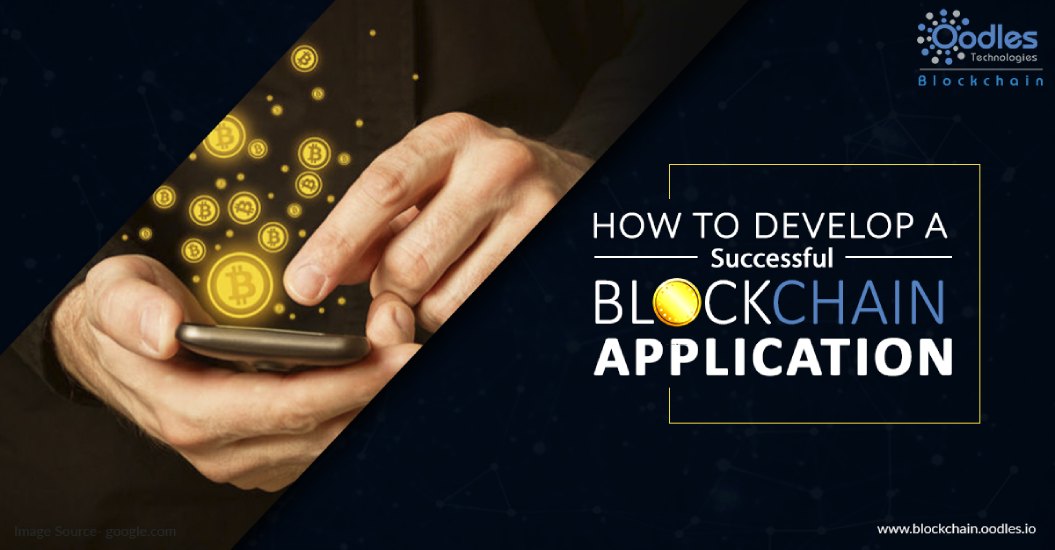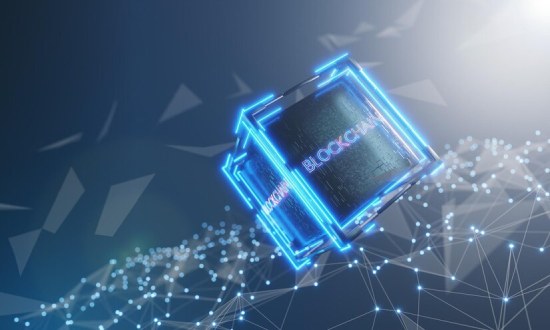-
In today's digital era, blockchain development services are not just a means to bring blockchain into reality but a transformative tool for businesses across industries. From enhancing transparency to ensuring secure transactions, blockchain applications have the potential to revolutionize processes, increase efficiency, and create new business models. This comprehensive guide explains blockchain application development in eight detailed steps, providing a roadmap for businesses looking to leverage this cutting-edge technology.
Identify the Business Problem and Define Objectives
The journey to a successful blockchain application starts with understanding the business challenge at hand. Before diving into technical aspects, it is critical to answer the following questions:
- What specific problem are you trying to solve?
Whether it's reducing fraud, improving supply chain transparency, or streamlining financial transactions, clearly define the pain points. - Why is blockchain the right solution?
Evaluate if blockchain's inherent features—immutability, decentralization, and transparency—can address your problem more effectively than traditional systems. - What are your success metrics?
Set measurable objectives such as reduced operational costs, increased transaction speed, or enhanced data security.
Key Considerations: Engage with stakeholders to capture requirements and conduct a feasibility study. Documenting the problem ensures that the blockchain solution is not built for technology's sake but addresses real business needs.
Choose the Right Blockchain Platform
Selecting a blockchain platform is a pivotal decision that influences the architecture, performance, and scalability of your application. There are several platforms available, each catering to different use cases:
Public Blockchains:
Platforms like Ethereum and Bitcoin offer a decentralized and permissionless environment. They are ideal for applications that require trustless interactions and broad participation. However, scalability and transaction costs can be challenges.
Private/Permissioned Blockchains:
Solutions like Hyperledger Fabric or Corda provide more control over the network, allowing only authorized participants. This approach is beneficial for enterprise applications that require privacy, high throughput, and compliance with regulations.
Hybrid Solutions:
Some projects may benefit from a hybrid model, where certain elements are on a public blockchain while sensitive data remains on a private chain.
Evaluating Factors:
Consider factors such as consensus mechanisms (Proof-of-Work, Proof-of-Stake, or Byzantine Fault Tolerance), scalability, security features, and community support when choosing a platform. Engaging with blockchain experts or consulting firms can also provide valuable insights tailored to your specific industry needs.
Also, Read | Unveiling the Potential Layer 3 Blockchain Development
Plan and Architect Your Blockchain Solution
A robust architecture is the backbone of any successful blockchain application. This phase involves translating business requirements into a technical blueprint that guides development and deployment.
Define System Architecture:
Outline the overall system structure, including components such as nodes, smart contracts, APIs, and user interfaces. Decide on the level of decentralization and how data will be stored and accessed.
Consensus Mechanism and Data Flow:
Determine the most suitable consensus mechanism that aligns with your application's security and performance needs. Establish how transactions will flow through the network, ensuring data integrity and consistency.
Scalability and Interoperability:
Design the system with scalability in mind. Consider how your application will handle increased transaction volumes over time and interact with other systems, including legacy databases or third-party APIs.
Security and Compliance:
Integrate robust security measures from the ground up. This includes encryption, access controls, and ensuring compliance with relevant data protection regulations (such as GDPR or CCPA).
Documentation and Roadmap:
Create detailed design documents, including flowcharts and technical specifications. This roadmap will guide your development team and serve as a reference during later stages of development and testing.
Develop Smart Contracts and Blockchain Logic
Smart contracts are self-executing contracts with the terms of the agreement directly written into code. They are the core of many blockchain applications, automating complex processes and reducing the need for intermediaries.
Smart Contract Development:
Clearly define the logic and rules that will govern transactions. Whether it's automating payments, verifying data, or enforcing regulatory compliance, smart contracts should reflect all business requirements.
Programming Languages and Tools:
Depending on the platform, select appropriate languages (e.g., Solidity for Ethereum, Chaincode for Hyperledger Fabric). Utilize Integrated Development Environments (IDEs) and tools that facilitate coding, debugging, and deployment.
Security Best Practices:
Blockchain is immutable by design, making it essential to ensure smart contract code is error-free. Conduct rigorous security audits and leverage frameworks and libraries that minimize vulnerabilities such as reentrancy attacks or integer overflows.
Version Control and Testing:
Use version control systems (like Git) to track changes. Develop unit tests to simulate various transaction scenarios, ensuring that smart contracts execute as intended under different conditions.
Iterative Development:
The development of smart contracts should be iterative, with frequent code reviews and testing cycles. Involve both technical and legal teams to ensure that the contract's logic aligns with business agreements and regulatory standards.
Also, Check | Layer 0 Blockchain Development | The Foundation of the Future
Integrate with Existing Systems
Blockchain applications rarely operate in isolation. Integrating your blockchain solution with existing systems is crucial to maximize its benefits and streamline overall business operations.
API Development:
Develop robust APIs to facilitate communication between the blockchain and traditional systems such as ERP, CRM, or supply chain management tools. This integration allows for real-time data exchange and enhanced decision-making.
Data Oracles:
Utilize oracles to bridge the gap between on-chain and off-chain data. Oracles fetch external data, such as market prices or weather conditions, and feed it into the blockchain, enabling smart contracts to execute based on real-world events.
Legacy System Adaptation:
Many enterprises have significant investments in legacy infrastructure. Develop middleware solutions that allow blockchain systems to interact seamlessly with existing databases and applications, minimizing disruption and enabling gradual migration.
Security Considerations:
Ensure that integration points are secure and that data privacy is maintained across all systems. This may involve encrypting data in transit, establishing secure communication protocols, and conducting regular security audits.
Best Practices:
Plan integration carefully to avoid creating data silos or bottlenecks. Collaboration between IT teams and blockchain developers is essential for a smooth transition and optimal performance.
Build the Front-End Interface
The front-end interface is the face of your blockchain application. It must be user-friendly, responsive, and capable of effectively communicating complex blockchain interactions to users.
User Experience (UX) and User Interface (UI) Design:
Design interfaces that simplify blockchain interactions. Since blockchain technology can be complex, the UI should abstract underlying technical details and present clear, actionable information to users.
Responsive Design:
Ensure that the application is accessible on various devices, including desktops, tablets, and smartphones. A responsive design enhances user engagement and adoption.
Real-Time Data Display:
Implement features that allow real-time tracking of transactions, smart contract execution, and asset status. Utilize dashboards and visualization tools to provide clear insights into blockchain operations.
Integration with Blockchain:
Develop front-end applications that interact seamlessly with the blockchain back-end via APIs. Consider using modern web development frameworks (such as React, Angular, or Vue.js) to create a robust and interactive user experience.
Focus on Usability:
User adoption hinges on the application's ease of use. Engage with potential end-users during the design phase to gather feedback and iterate on the interface design to ensure it meets user expectations.
Also, Discover | Exploring Solana Blockchain Development for Enterprises
Testing and Quality Assurance
Testing is an indispensable part of blockchain application development. Given the immutable nature of blockchain transactions, rigorous testing ensures that issues are identified and resolved before deployment.
Unit Testing:
Develop extensive unit tests for each component, especially smart contracts. Testing individual functions helps isolate issues early in the development process.
Integration Testing:
Validate the interaction between the blockchain back-end, smart contracts, APIs, and front-end interfaces. Ensure that all components work together seamlessly under various scenarios.
Security Testing:
Given the high stakes involved, security testing is paramount. Conduct vulnerability assessments and penetration testing to uncover potential weaknesses. Utilize automated tools and third-party audits to ensure that your application is secure from common exploits.
Performance Testing:
Evaluate the system's performance under load. Simulate high transaction volumes to ensure that the blockchain network can handle peak usage without significant delays or failures.
User Acceptance Testing (UAT):
Engage with a group of end-users to test the application in real-world scenarios. Gather feedback on usability, functionality, and performance, then refine the product based on this input.
Continuous Improvement:
Blockchain applications require ongoing testing even after deployment. Establish a feedback loop that includes regular updates, bug fixes, and performance optimizations to maintain the integrity and efficiency of your system.
Deployment, Maintenance, and Upgrades
Once development and testing are complete, the focus shifts to deployment and ongoing maintenance. Blockchain applications, like any other software, require continuous monitoring and updates to adapt to evolving business needs and technological advancements.
Deployment Strategy:
Develop a detailed deployment plan. For public blockchains, this may involve deploying smart contracts to the live network, while for private networks, you may need to manage node configuration and permissions. Use automated deployment tools to streamline the process and reduce human error.
Monitoring and Analytics:
Set up monitoring systems to track the performance and security of your blockchain network. Utilize analytics tools to gather insights on transaction volumes, user interactions, and system health. Proactive monitoring helps detect and resolve issues before they impact business operations.
Maintenance and Support:
Establish a dedicated team to manage ongoing maintenance, security updates, and system optimizations. Blockchain applications must adapt to regulatory changes, evolving threats, and user feedback. Regularly update smart contracts and system components as needed while ensuring backward compatibility.
Upgrades and Scalability:
Plan for future growth. As your application scales, you may need to upgrade infrastructure, enhance security measures, or integrate new features. Adopt a modular design that allows for seamless upgrades and minimizes downtime.
Documentation and Training:
Maintain comprehensive documentation and provide training for users and administrators. Clear guidelines and procedures ensure that everyone involved understands how to operate and maintain the blockchain system effectively.
Also, Explore | Top Blockchain Development Companies | Oodles Blockchain
Conclusion
Blockchain application development is a multifaceted process that requires careful planning, technical expertise, and ongoing collaboration between business and IT teams. By following these eight steps—identifying the business problem, selecting the right platform, designing a robust architecture, developing smart contracts, integrating with existing systems, building a user-friendly interface, rigorously testing the solution, and planning for deployment and maintenance—businesses can harness the full potential of blockchain technology.
Embracing blockchain can lead to improved transparency, reduced fraud, enhanced efficiency, and the creation of innovative business models. Whether you are in finance, supply chain, healthcare, or any other industry, understanding these steps provides a solid foundation for building secure, scalable, and transformative blockchain applications.
Frequently Asked Questions (FAQ)
Q1: What is blockchain application development?
Blockchain application development involves creating software solutions that leverage blockchain technology to ensure secure, decentralized, and transparent transactions. This process includes designing and developing smart contracts, integrating with existing systems, building user interfaces, and deploying the solution on a blockchain network.
Q2: Why should my business consider blockchain technology?
Blockchain technology offers numerous benefits including enhanced security, transparency, and efficiency. It can help reduce fraud, streamline operations, and create new revenue streams by enabling decentralized processes. For industries that handle large volumes of transactions or sensitive data, blockchain provides a robust solution that traditional systems may not offer.
Q3: How do I choose the right blockchain platform?
The choice of a blockchain platform depends on your business requirements. Public blockchains like Ethereum offer decentralization and security, while private or permissioned blockchains such as Hyperledger Fabric provide greater control and privacy. Consider factors like scalability, consensus mechanisms, security features, and the level of decentralization needed for your application.
Q4: What are smart contracts and why are they important?
Smart contracts are self-executing contracts with the terms of the agreement directly written into code. They automate transactions and enforce agreements without the need for intermediaries, ensuring that processes are executed exactly as programmed. This automation reduces errors and increases trust among parties.
Q5: What are the key challenges in blockchain application development?
Some key challenges include selecting the appropriate blockchain platform, ensuring security, integrating with legacy systems, scalability, and regulatory compliance. Rigorous testing, planning, and a clear understanding of business requirements can help mitigate these challenges.
Q6: How do I ensure the security of my blockchain application?
Security should be integrated at every stage of development. This includes writing secure smart contract code, conducting regular security audits and penetration tests, encrypting data, and using robust authentication methods. Continuous monitoring and regular updates are essential to protect against evolving threats.
Q7: Can blockchain technology be integrated with existing systems?
Yes, blockchain technology can be integrated with legacy systems through APIs, middleware, and oracles. This integration allows businesses to leverage blockchain's benefits without completely overhauling their existing infrastructure.
Final Thoughts
Blockchain application development is a strategic initiative that can drive significant business value. By methodically following the eight steps outlined in this guide, companies can build robust, secure, and scalable blockchain solutions that transform traditional business processes. The fusion of business acumen and technical expertise is key to navigating the complexities of blockchain technology and realizing its full potential.
At Oodles Blockchain, a blockchain development company, our goal is to empower businesses with innovative solutions that not only meet today's challenges but also pave the way for future growth. Connect with our skilled blockchain developers to embrace the power of blockchain and transform your business operations—one step at a time.
- What specific problem are you trying to solve?

Our Offices
INDIA
Emaar Digital Greens, Sector 61,
Gurugram, Haryana
122011.
Welldone Tech Park,
Sector 48, Sohna road,
Gurugram, Haryana
122018.














